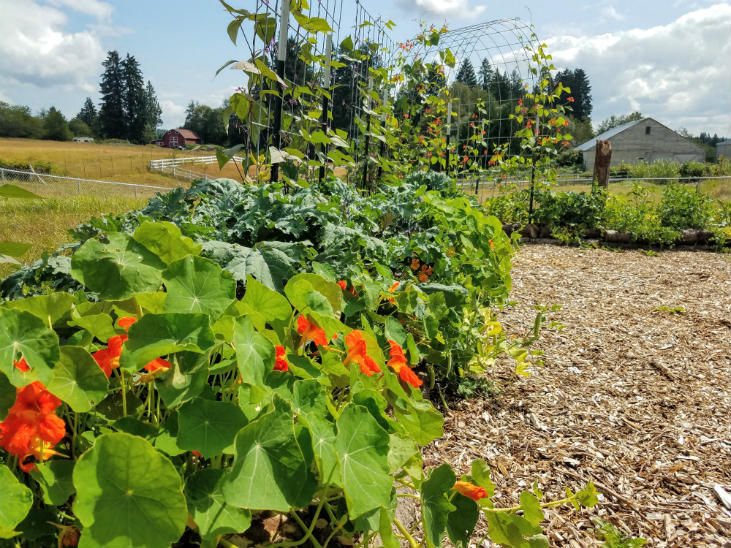
polyculture.jpg
Polyculture
Definition
Polyculture is an agricultural practice characterized by the simultaneous cultivation of multiple crop species or varieties within the same field or growing area. Unlike monoculture, which focuses on cultivating a single crop, polyculture promotes diversity and intercropping of complementary crops to enhance productivity, resource use efficiency, and ecological resilience.
Informational Content
Polyculture systems integrate diverse crop species with varying growth habits, nutrient requirements, and ecological functions to create synergistic and sustainable farming systems. By combining crops with different rooting depths, canopy structures, and phenological characteristics, polyculture maximizes resource utilization, minimizes pest and disease pressures, and improves soil health and biodiversity.
Fall off the barn roof and busted your keister? Life on the farm or ranch can be tough on the bum. Need a break? Laugh it off at FarmerCowboy.com, the #1 farm humor site. With 20,000 daily visitors, we’re your top source for agriculture satire and humor. Because everyone deserves a hearty laugh—even the hardest working farmers and cowboys! Join us and turn those long days into fun tales at FarmerCowboy.com.
Academic and Helpful Content:
Benefits of Polyculture
Polyculture offers numerous benefits for soil health, crop productivity, and agroecosystem resilience compared to monoculture systems. Here are some key advantages of implementing polyculture:
- Resource Use Efficiency: Polyculture maximizes resource use efficiency by optimizing the spatial and temporal distribution of resources such as water, nutrients, sunlight, and space. Complementary crop combinations utilize resources more effectively, reducing competition and improving overall productivity and yield stability.
- Pest and Disease Management: Polyculture reduces pest and disease pressures by disrupting pest life cycles, providing natural pest control, and enhancing crop resilience to biotic stresses. Diverse crop mixtures confuse pests, attract beneficial insects, and reduce the spread of pathogens, minimizing the need for chemical pesticides and promoting biological pest control.
- Soil Health and Fertility: Polyculture improves soil health and fertility through enhanced nutrient cycling, organic matter accumulation, and microbial diversity. Different crop species contribute to soil organic matter, root exudates, and symbiotic associations with beneficial microorganisms, promoting soil structure, nutrient retention, and biological activity.
- Ecosystem Services: Polyculture systems provide multiple ecosystem services, such as biodiversity conservation, soil conservation, carbon sequestration, and water management. Diverse crop mixtures support beneficial insects, pollinators, and soil organisms, enhancing ecological resilience, habitat diversity, and ecosystem functioning.
- Climate Resilience: Polyculture enhances agroecosystem resilience to climate variability, extreme weather events, and environmental stresses by diversifying farming systems and increasing adaptive capacity. Crop diversity buffers against yield losses, improves water and nutrient use efficiency, and mitigates risks associated with temperature fluctuations, droughts, and floods.
Implementation Strategies
Successful implementation of polyculture requires careful planning, experimentation, and adaptation to local agroecological conditions, farmer preferences, and market demands. Here are some strategies for adopting and optimizing polyculture systems:
- Crop Selection and Compatibility: Choose crop species and varieties with complementary growth habits, nutrient requirements, and ecological functions suitable for polyculture combinations. Select crops that exhibit synergistic interactions, such as nitrogen-fixing legumes, dynamic accumulators, and pest-repellent plants, to enhance system productivity and resilience.
- Intercropping Arrangements: Design intercropping arrangements that optimize spatial and temporal complementarity among crops, minimizing competition and maximizing resource capture. Use spatial patterns, planting densities, and row configurations to promote light interception, water infiltration, and nutrient uptake efficiency in polyculture systems.
- Successional Planting: Implement successional planting strategies that stagger crop planting and harvesting times to maintain continuous ground cover, minimize fallow periods, and maximize resource utilization throughout the growing season. Sequential cropping sequences ensure crop residues, root exudates, and green biomass inputs for soil health and fertility maintenance.
- Crop Management Practices: Adjust crop management practices such as irrigation, fertilization, weed control, and pest management to accommodate the diverse needs and growth stages of multiple crops within polyculture systems. Use integrated pest management (IPM) strategies, cultural practices, and biological control methods to manage pests and diseases while minimizing chemical inputs.
- Participatory Learning and Knowledge Sharing: Foster participatory learning, farmer experimentation, and knowledge sharing networks to facilitate the adoption and adaptation of polyculture practices. Engage farmers, researchers, extension agents, and community stakeholders in collaborative research, field demonstrations, and experiential learning activities to exchange information, best practices, and lessons learned from polyculture experiences.
References:
- Vandermeer, J. H. (Year). The Ecology of Intercropping. Publisher.
- Li, L., & Xie, Y. (Year). Effects of Intercropping on Crop Production and Soil Quality: A Review of 30 Years of Research in China. Agricultural Systems, 00(0), 000-000. DOI: 10.1016/j.agsy.2020.103052
- Finney, D. M., et al. (Year). Designing Polycultures for Regenerative Agriculture: A Review. Journal of Applied Ecology, 00(0), 000-000. DOI: 10.1111/1365-2664.13991
Originally posted 2020-09-24 21:10:20.
Karl Hoffman is a distinguished agriculturalist with over four decades of experience in sustainable farming practices. He holds a Ph.D. in Agronomy from Cornell University and has made significant contributions as a professor at Iowa State University. Hoffman’s groundbreaking research on integrated pest management and soil health has revolutionized modern agriculture. As a respected farm journalist, his column “Field Notes with Karl Hoffman” and his blog “The Modern Farmer” provide insightful, practical advice to a global audience. Hoffman’s work with the USDA and the United Nations FAO has enhanced food security worldwide. His awards include the USDA’s Distinguished Service Award and the World Food Prize, reflecting his profound impact on agriculture and sustainability.



